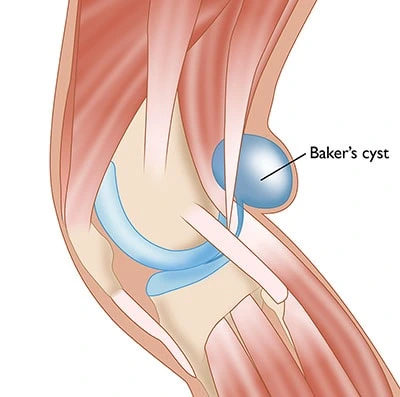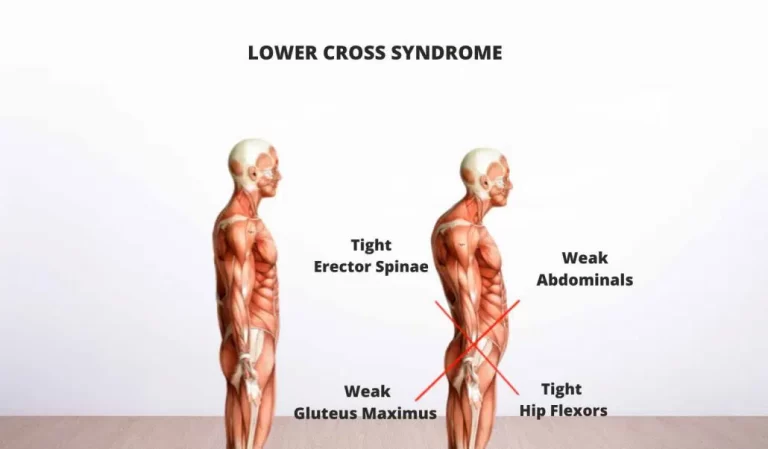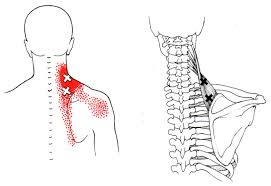Vastus medialis muscle pain at the knee: Cause, Symptoms, Treatment, Exercise
When you feel knee pain & difficulty in walking, running & or stairs activities, it is indicated to be vastus medialis muscle pain at the knee. this pain is produced for many reasons like muscle injury, strain & many reasons.
This muscle injury produces pain with swelling & spasms. this pain is relived by RICE principle, pain medication & physiotherapy treatment.
Table of Contents
What is the anatomy of the Vastus medialis muscle?

- This muscle is one of the four quadriceps muscles in the front of the upper thigh.
- The teardrop-shaped muscle helps move the knee joint & stabilizes the kneecap-patella.
- This muscle originates from the intertrochanteric line on the inner part of the thigh bone (femur).
- It courses down the front & inner portion of the kneecap – patella & joins the other quadriceps muscles such as rectus femoris, vastus lateralis & vastus intermedius.
- These muscles are attached to the patella via the quadriceps tendon & envelope with the patella.
- This muscle inserts the patellar tendon on the front of the shin bone (tibia).
What are the causes of the vastus medialis muscle pain at the knee?
- Muscle Imbalance:
- When they occur weakness & tightness in the vastus medialis muscle, it is lead to medial knee pain.
- Kneecap Problems:
- When the occur weakness in the oblique portion of this muscle affects the positioning & movement of the knee cap which is frequently given to results in kneecap pain.
- Patellofemoral stress syndrome (PFSS) :
- PFSS occurs when the kneecap-patella fails to track properly in the femoral groove.
- It is given to result in pain around the kneecap & makes it hard to walk, jump & or run.
- Since this muscle is a major stabilizer of the kneecap & occurs weakness is the cause of PFSS.
- Femoral nerve injury:
- When the occur injury to the femoral nerve which produces paralysis or paresis of the vastus medialis muscle.
- This femoral nerve arises from the lower lumbar spine which is to cause of some conditions like arthritis, a herniated disc & spinal tumors.
- It is given to result in weakness in the muscle & knee joints difficult or impossible.
- This injury affected your ability to walk, climb stairs & rise from a chair.
- Vastus medialis muscle weakness after surgery & injury:
- when does any knee surgery, which produce swelling around the knee joint?
- This swelling irritates the nerves which are supplied by these muscles & leads to weakness.
- Patellar dislocation or subluxation:
- When occurring to patellar dislocation, this vastus medialis muscle becomes injured or torn.
- This injury leads to pain & muscle weakness.
- You also feel difficulty in walking & running.
- Vastus medialis muscle strain:
- When an occurring sudden blow to the thigh is given it results in a strain on the vastus medialis muscle.
- This injury occurs due to the trauma.
- It is produced in pain, swelling & muscle weakness.
- Plica syndrome:
- It is a small fold of the tissue which surrounds part of the kneecap called a plica.
- when this tissue becomes too pinched between the kneecap & femoral groove, it becomes too painful.
- As a stabilizer of the kneecap-patella, the vastus medialis muscle help must keep it in place & prevent the plica from getting pinched.
- Some other causes that are mostly avoided in our daily life that this cause is lead to muscle pain :
- When you do the Overtraining & use to overuse of these muscles.
- when you are Frequent participate in this muscle heavy movements, like skiing, soccer, football
- If occurs to Pronation of the foot during the walking & running activities.
What are the symptoms of the vastus medialis muscle injury?
- You feel Pain along with the inner thigh & at the front or inside of the knee joint.
- You also feel Constant pain in the knee joint.
- You are observing the Buckling of the knee joint
- Cramping & tightness is also felt in the thigh.
- In the muscle pain area, Tenderness & trigger points are also present.
- You have observed Swelling & Bruising
- Sometimes this injury occurs due to Foot pronation on the affected side.
What is the diagnosis for the vastus medialis muscle pain at the knee?
- When the pain is not relieved by the primary treatment contact to doctor for muscle pain.
- The doctor is follow the assessment to try to know the cause of the muscle pain.
- After the assessment doctor is advised to do some tests if the need for this diagnosis.
- After the proper diagnosis doctor is advised you on proper treatment.
What is the treatment for the vastus medialis muscle pain at the knee?
RICE principle :
When the pain occurs in the muscle doctor is advised to RICE principle as home treatment or primary treatment.
- R – rest = When the pain occurs doctor is always advised to rest for sometimes for release to muscle pain & swellings, you can use crutches for weight-bearing & release muscle pain.
- I – ice = You can apply ice on the area of pain for 20 minutes release to swellings & muscle pain but always applied to the ice with the help of a towel between the skin & ice prevent to ice burn, you can also be used to ice pack & frozen peas for ice therapy.
- C – compression = You can also apply compression bandage release to muscle pain, and swelling.
- E – elevation = You must be elevated to the injured leg for release to muscle pain & swellings.
Pain medication :
- You can also take to non-steroidal anti-inflammatory drugs = NSAIDs like Diclofenac & Etodolac which help to release the muscle pain.
- When you have felt severe pain, your doctor prescribes something stronger drug.
- You can also apply pain relieving gel & spray like volini gel & spray on the area of muscle pain release to muscle pain & swelling.
Heat therapy:
- Applying heat to the painful muscle through the use of a heat pack helps you alleviate the pain.
- This therapy is an inexpensive, effective form of pain relief that works by increasing the blood flow to the area, relaxing muscles & increasing the ROM – range of movement & flexibility.
- By increasing the circulation & blood flow throughout the area so that injury healing properties are delivered to the muscles, reducing the symptoms of muscle pain.
What is Physiotherapy treatment for vastus medialis muscle pain at the knee?
Physiotherapy treatment is help you relieve pain, swelling, spam & tightness of the muscle pain.
The physiotherapy treatment includes massage, electrotherapy treatment, Trigger Point Release, Dry Needling, Myofascial Release & exercise therapy.
Massage :
- When the trigger or tender points is present in the muscle pain therapist is advised to massage therapy release to the muscle pain.
- Massage is applied with the help of the oil & applied for 5 minutes.
- Massage is applied 3 times per day.
Electrotherapy treatment :
To relieve the swellings, spasms & pain therapist is advised to you electrotherapy treatment.
In electrotherapy, the treatment therapist is used to many machines.
- When the trigger & tender points are present therapists apply US = ultrasound therapy for the release of muscle pain.
- This treatment is applied with the help of gel & applies for 5 to 10 minutes on the area of pain.
- This therapy helps you release pain & swelling.
- Reduce to pain therapist is applied to SWD = short wave diathermy, IFT = Interferential Therapy, TENS = Transcutaneous Electrical Nerve Stimulation on the area of pain.
- SWD = Short wave diathermy is hot therapy for release to spams on the area of pain.
- IFT = Interferential Therapy & TENS = Transcutaneous Electrical Nerve Stimulation is applied with the help of gel & electrodes on the area of pain.
- This therapy is applied for 10 minutes to the area of pain.
Trigger Point Release:
- This therapy involves the application of firm pressure onto a hyper-irritable spot & taut band, known as a trigger point.
- This pressure is work to release the tension in the muscle, by decreasing the blood flow to the muscle area & decrease the pressure felt.
- When the pressure is removed, blood flows are back to the area & flushes any toxins which are released by this muscle.
Dry Needling:
- Dry needling is a technique that is used to reduce muscle restriction by releasing the trigger points with acupuncture needles.
- A Soft tissue Occupational Therapist is used to individually packed sterilized acupuncture needles applied directly to the needle on the trigger point & produce a local response within the muscle, which quickly dissipates & allows the muscle to relax.
Myofascial Release:
- Myofascial release is a manipulative treatment which is attempts to release tension in the fascia due to trauma, inflammation & posture.
- Connective tissues which are known as fascia which is locked to surround the muscles, nerves, bones & organs of the body. Points of restriction in this fascia are placed a great deal of pressure on the nerves & muscles which is become the cause of chronic pain.
- A soft tissue occupational therapist employs long stretching strokes meant to balance tissue & muscle mechanics & improve joint ROM – range of motion to relieve pain.
Exercise therapy :
After following the RICE principle for the 2- 3 days at home & primary treatment & the help of pain medication, you feel released from the pain.
when you feel too comfortable & released from your muscle pain then the physiotherapist advises you to exercise therapy reduce to muscle weakness & tightness.
The exercise therapy for muscle pain includes Stretching & strengthening Exercises.
Stretching exercise helps to relieve muscle tightness as well as strengthening Exercise is help you relieve muscle weakness.
Stretching exercise:
After the follow-up electrotherapy for 2-3 days for release to muscle pain by physiotherapist then the therapist is advised to stretch for release to muscle tightness.
This stretching is applied when your pain is released & when you feel comfortable.
This all Stretching exercise helps you release muscle pain & tightness
- The Lying Quad Stretch
- The Simple Quad Stretch
- The Kneeling Quad Stretch
- Vastus Medialis Stretch
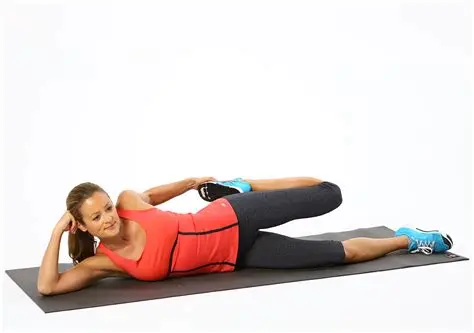
The Lying Quad Stretch:
- You are lying in a face-down position & propping the head on the left hand.
- Alternatively, you can lie on the side to perform this stretch.
- After some seconds, pull the right foot toward the butt & bend the left knee joint to stabilize yourself.
- Then Hold onto your ankle joint & maintain this stretching position for 30 seconds.
- Repeat this Stretching exercise 3 times at 1 time & do the 3 times per day.
The Simple Quad Stretch:
- You are standing on your left leg & one knee joint touching the other.
- You can hold a chair & the wall to keep the steady if needed.
- Grab the right foot & use your right hand & pull it towards your butt.
- Must Be sure to push your chest up & hips joint forward.
- Try not to worry about pushing the foot too close to your backside.
- But your focus must be on feeling the stretch in your quad muscle & pushing your hip joint forward to get a good hip flexor muscle stretch.
- Hold this stretching position for 30 seconds.
- Repeat this Stretching exercise 3 times at 1 time & do the 3 times per day.
The Kneeling Quad Stretch:
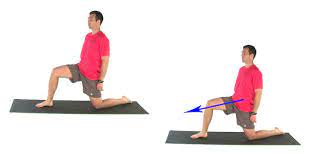
- This stretching exercise Start with a high lunge position, with the left foot forward.
- Then Carefully drop your right knee joint to the floor & take a moment the balance.
- When you are ready, reach back with your right arm & grab your ankle joint or toes.
- Hold this stretching position for 30 seconds but must keep the body steady.
- Then Gradually come back into the lunge position & opposite from the left foot to the right foot.
- Repeat this Stretching exercise 3 times at 1 time & do the 3 times per day.
Vastus Medialis Stretch:
- You are Stand holding a chair & the wall for balance
- Bring your heel up behind you, grasp your ankle joint & pull your heel towards your buttock, till you are feeling a stretch, without bending forwards
- It is done the stretch all 4 of the quads muscles but for stretch vastus medialis muscle by moving the foot across the body towards the other buttock.
- You can Increase the stretch by pushing your hip joint forwards in this exercise.
- Repeat this Stretching exercise 3 times at 1 time & do the 3 times per day.
Strengthening Exercises:
After the follow-up electrotherapy & massage for 2 -3 days for the release of muscle pain by the physiotherapist then the therapist is advised to you strengthening exercises for release to muscle weakness.
This strengthening exercise is always advised when you feel to release pain & when you feel comfortable.
This all-strengthening exercise helps you with muscle weakness & pain.
- Lying Pigeon Progression
- The Frog Pose
- Floor extension
- Lateral heel drop
- Step downs
- Leg extension
- Single leg raises
- Terminal knee extensions (TKEs)
- Vastus Medialis activation Exercise
- Ball Clench Extensions
- Twisted Leg Raise
- Ball Bridges
- Ball Wall Squats
- Isometric Contraction of the vastus medialis muscle
- Seated Isometric vastus medialis muscle & Adduction
- Externally Rotated ½ Squats
- Wall/Ball Squat
- Split Squats/Static Lunges
- Step-Ups
Lying Pigeon Progression:
- In the first place, a mat on the floor & you are lying face down.
- Then must be Secure place a resistance band around the affected foot, with the excess band in a reachable area.
- Grab the band with the left hand & must keep the right leg extended or bend the left knee joint.
- Must keep your toes pointed toward the ceiling.
- Then use the resistance band to pull forward till you feel the stretch.
- Hold this exercise position for 10 seconds.
- Repeat this strengthening exercise 10 times in 1 time & do the 3 times per day.
The Frog Pose:
- This exercise starts by lying on your stomach means in a prone position & propping the torso up on your elbow joints.
- Bend both of your knee joints &, and reach back to hold onto your feet.
- You feel the stretching at this point.
- Then Adjust the fingers to point the same way as your toes, then carefully lift your elbow joint to point to the ceiling.
- Push the chest up as high as possible.
- This exercise is Stopped completely when you feel any pain in the hip or knee joint.
- Hold this exercise position for 10 seconds.
- Repeat this strengthening exercise 10 times in 1 time & do the 3 times per day.
Floor extension:
- You are sitting down on the floor with a tall posture.
- Your shoulders joint should be pulled down the back with your chest proud.
- Then Bend your left knee joint in toward your chest with your left foot flat on the floor.
- Extend your leg in front of you with your foot pointing slightly out to the side then.
- Hold under the left knee joint with both hands interlocked & must keep your muscle flexed for the duration of this exercise.
- Do the Exhale Without losing the posture & leaning away from the wall, lift the right leg in the air as high as possible.
- Hold this position for 10 seconds.
- Then Inhale & slowly lower down to your starting position.
- Repeat this strengthening exercise 10 times in 1 time & do the 3 times per day.
Lateral heel drop:
- You are standing tall with your left leg straight but not locked & your foot is resting on a small step.
- Do the right knee joint slightly bent & your left foot should be flat on the floor.
- Your right knee joint must be going over the toes.
- Then Squeeze your core muscle for balance.
- Exhale & push up off the right leg till both legs are fully straightened.
- Try to keep your hip joint level as you step up.
- Inhale then contract your left vastus medialis muscle & slowly return to your starting position.
- Hold this exercise position for 10 seconds.
- Repeat this strengthening exercise 10 times in 1 time & do the 3 times per day.
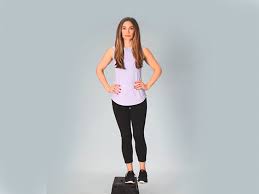
Step downs:
- You are standing with the right foot on the step & your left foot off to the side.
- Do the Inhale & Flex the vastus medialis muscle.
- Then bend your right knee joint till your left foot is flat on the floor.
- Must be Again, try to keep your hip joint level at all times.
- Do the Exhale & engage your core muscle.
- Then push off your foot & return to your starting position.
- Hold this exercise position for 10 seconds.
- Repeat this strengthening exercise 10 times in 1 time & do the 3 times per day.
Leg extension:
- You are sitting on a chair & scoot yourself to the front of the seat.
- Then Wrap a resistance band around your ankle joint & feed the band under the chair, which you reach back & grab with your hand.
- Do the Exhale & in one motion then slowly extend your leg to full extension out in front of you.
- Then do the Inhale & contract your muscles & slowly lower the leg back down to 30 degrees.
- Hold this exercise position for 10 seconds.
- Repeat this strengthening exercise 10 times in 1 time & do the 3 times per day.
Single leg raises:
- You are lying on the back with your knee joint bent & foot flat on the mat.
- Fully extend your right leg out in front of you must be placing an ankle joint weight on your thigh.
- Squeeze your core muscle &contract the vastus medialis muscle & lift the right leg about 2 inches off the mat.
- Must Keep the leg duration of this exercise.
- Make sure you are not arching your back.
- You do not put any space between the back & the mat.
- Hold this exercise position for 10 seconds.
- Repeat this strengthening exercise 10 times in 1 time & do the 3 times per day.
Terminal knee extensions (TKEs):
- You are Tie a resistance band around a sturdy anchor & slide the other end up to slightly above the back of your right knee joint, facing the anchor.
- Step back till the band is taut.
- Then Straighten your left leg & keep your right knee joint slightly bent.
- Do the Exhale & push your right knee joint back to match your left knee joint & exaggerate the contraction in your vastus medialis muscle.
- Hold this exercise position for 10 seconds.
- Repeat this strengthening exercise 10 times in 1 time & do the 3 times per day.
Vastus Medialis activation Exercise:
- You are sitting upright in a chair, with your knee joint bent.
- Place the ball between your knee joint & your feet flat on the floor.
- Then Place your thumbs on the soft, squashy area on the inner side of the knee joint, just above your kneecap – patella & press down firmly
- Then Clench your glutes & gently squeeze the ball.
- Make sure the movement comes from your knee joint rather than the inner thigh.
- If you do not feel stretch must be, try clenching your buttocks, clenching your knee joint & squashing the backs of your thighs down into the chair
- Hold this exercise position for 10 seconds.
- Repeat this strengthening exercise 10 times in 1 time & do the 3 times per day.
Ball Clench Extensions:
- You are lying on your back with a rolled-up towel underneath your knee joint & place the ball between your knee joint.
- Then Clench your buttocks & gently squeeze the ball & lift one heel off the ground till the knee joint is straight.
- Keep clenching the ball & hold for 10 seconds then slowly return to the starting position.
- Repeat this strengthening exercise 10 times in 1 time & do the 3 times per day.
Twisted Leg Raise:
- You are lying on your back with one leg stretched out straight & the other knee joint bent.
- It takes the tension off the lower back as you work the straight leg.
- Turn your foot outwards about 20 into external rotation & lift the foot till your thighs are parallel.
- Hold this exercise position for 10 seconds.
- Repeat this strengthening exercise 10 times in 1 time & do the 3 times per day.
- Must be Keep the leg turned outwards in this exercise which is helpful to you activate the vastus medialis muscle.
Ball Bridges:
- You are lying on your back with your knee joint bent, feet are hip-distance apart.
- Place the ball between your knee joints.
- Then Clench your glute muscles & gently squash the ball.
- Lift your bottom as high as possible without arching your back.
- Hold this exercise position for 10 seconds.
- Repeat this strengthening exercise 10 times in 1 time & do the 3 times per day.
Ball Wall Squats:
- You are standing with your back against a wall & squashy ball between your knees joint.
- Must be placed heels about 6″ away from the wall & toes are pointing forwards.
- Clench your glutes muscle & gently squash the ball to activate the vastus medialis muscle then slowly slide down the wall, & bend your knee joint.
- Hold this exercise position for 10 seconds.
- Repeat this strengthening exercise 10 times in 1 time & do the 3 times per day.
Isometric Contraction of the vastus medialis muscle :
- You are Sitting position on your bed & floor with the legs are out straight & place a towel underneath your knee joint.
- Flex your quads muscle with the hip joint /leg slightly externally rotated.
- Hold this contraction for 10 seconds & place your fingers on your VMO to ensure your vastus medialis muscle is activating & firing.
- Repeat this strengthening exercise 10 times in 1 time & do the 3 times per day.
Seated Isometric vastus medialis muscle & Adduction:
- You are sitting on a chair & platform where your feet hang freely.
- Place a ball between your thighs & squeeze the ball together activating your vastus medialis muscle.
- Hold this muscle contraction for 10 seconds.
- Repeat this strengthening exercise 10 times in 1 time & do the 3 times per day.
Externally Rotated ½ Squats:
- You are standing with your legs are shoulder-width apart with the knee joint & feet externally rotated.
- Squat halfway down & come up nice & slowly which focuses on activating the vastus medialis muscle to bring you back up to a standing position.
- Repeat this strengthening exercise 10 times in 1 time & do the 3 times per day.
Wall/Ball Squats:
- You are placing a Swiss ball on your back against the wall.
- Then Slowly squat down into a near-seated position so that your thighs are parallel to the ground.
- Slowly come back up & avoid locking your knee joint.
- Repeat this strengthening exercise 10 times in 1 time & do the 3 times per day.
Split Squats/Static Lunges:
- This exercise is to Start with your feet shoulder-width apart & take one large step forward.
- You can place your hands on your hip joint.
- To make this exercise harder must hold dumbbells by your side.
- With an upright posture, lunge down & up without your knee joint at the front moving in front of your big toe.
- But Focus on putting the most of the weight through your front heel &don’t let your knee joint buckle in.
- Repeat this strengthening exercise 10 times in 1 time & do the 3 times per day.
Step-Ups:
- You are Standing in front of a bench & chair.
- Step up onto a platform & drive from the gluteal muscle, not from your toe.
- Ensure your knee joint is not buckling inwards.
- It is forced/pushed out.
- Then Slowly step down making sure your knee joint is stable.
- Repeat this strengthening exercise 10 times in 1 time & do the 3 times per day.

